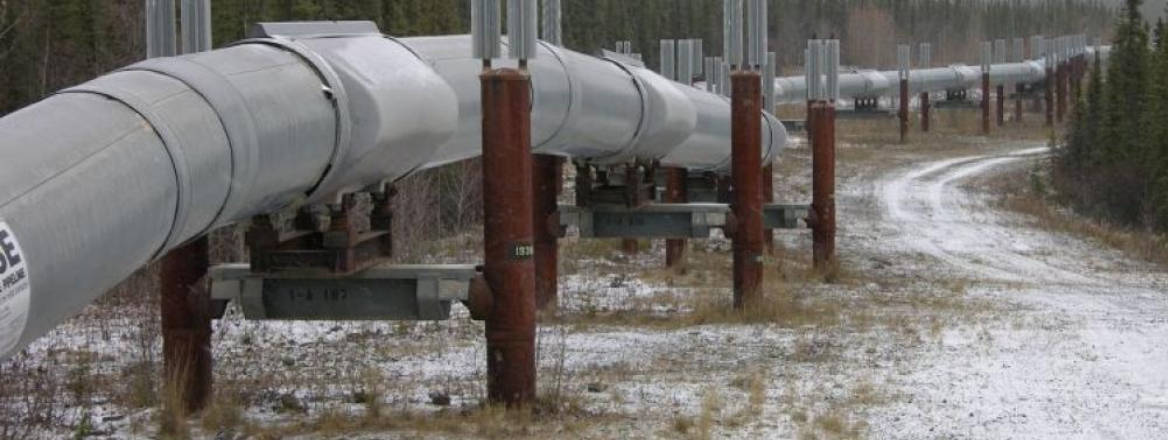While the Arctic is often thought of as a far-off and forbidding place, several million people live there and the world depends on its resources. And it may also be impacted by the coronavirus pandemic.
The number of cases of coronavirus infections occurring in the Arctic is hard to determine. While a case tracker on the Anchorage Daily News website shows no cases in either the Northwest Arctic Borough or the North Slope Borough in Alaska, at least one worker at an Arctic oil facility on the North Slope has tested positive. But as he did not acquire the infection in the Alaska Arctic, it was recorded elsewhere.
Contrast this with Russia. According to a recent article in The New Yorker, the BBC Russian Service reported that the remote Russian Arctic village of Belokamenka had at the time the largest recorded outbreak in Russia, due mainly to a large and rotating foreign workforce employed on an oil and gas project. The number there has now been dwarfed by the number of cases in Moscow, but it illustrates the potential of cases to spread in the close quarters of oilfield facilities unless travel is restricted.
Many of the communities across the Arctic remember the devastation caused by the Spanish influenza pandemic of 1918–19, and they have moved to isolate themselves. Polar Connection provides a complete list of measures taken by the various countries with territory in the Arctic.
The real impact on the Arctic regions so far is economic, not medical. According to a colleague in Canada, the town of Cambridge Bay, Nunavut, will face serious economic impacts from the cancellation of this year's cruise tourist season. In Alaska, the largest regional airline, Ravn, went bankrupt because of the rapid decline in business. This has a negative impact on roadless Alaska Arctic communities as well as other communities outside the Arctic which depended on Ravn for travel and the delivery of supplies in Alaska.
Coronavirus is also impacting the region’s oil industry. The Alyeska Pipeline Service Company has announced a cutback of 50,000 barrels per day in oil throughput in the Alaska North Slope from late April until the end of May. This cut is in response to the slump in demand as a result of the pandemic. When this cut is scheduled to end, ConocoPhillips (the biggest producer in Alaska) will implement a cut of 100,000 barrels a day, most of which will be from North Slope fields.
Scientific research is also being impacted. A glance at the website for the Arctic Research Consortium of the United States shows that all PolarTREC expeditions for 2020 have been postponed until 2021. These expeditions provide an opportunity for educators and students to work side-by-side with researchers on various Arctic and Antarctic issues. Many of the in-person Arctic conferences planned for 2020 have been converted to webinars.
The effect of coronavirus on Arctic field research planned for the 2020 season has been ‘severe’ according to Hajo Eicken, the director of the International Arctic Research Center at the University of Alaska, Fairbanks. He was quoted as saying that researchers potentially would be unable to visit any of the field sites during the short window of opportunity in 2020. The Arctic research expedition of the RV Polarstern has also been interrupted because the vessel will have to sail south for resupply instead of being resupplied by air from Norwegian or Russian airfields due to travel restrictions.
It is unclear at this time what the impact has been on military forces in the Arctic. There were reports in late March that the entire crew of a Russian Northern Fleet Oscar-II class submarine had been quarantined after a visit by a contractor who had been in contact with a person who had tested positive. These reports also stated that a ‘near-by submarine’ (type not reported) and a floating workshop had also been quarantined for the same reason. There have been no further reports on a major coronavirus outbreak in the Northern Fleet. Fleet readiness does not appear to have been impacted; in fact, the Russian Ministry of Defence reported on 4 May that the Northern Fleet was tracking a group of four US Navy and one Royal Navy vessels in the Barents Sea. The ministry noted that this was the first time the US Navy has operated surface vessels in the Barents since the 1980s.
Most of the major Arctic military exercises occur in summer and early autumn, so the effects may not be known for some months. It is worth noting that the Russians conducted an unprecedented high-altitude paradrop onto Alexandra Land (in the Franz Josef Archipelago) during a three-day exercise in late April. However, most of these troops were from outside of the Arctic region so this cannot be used as a yardstick to measure the impact of the pandemic on Arctic-based forces.
Of course, the big question is whether there will be lasting political, economic and military impacts for the Arctic region. We will just have to wait and see...
Keith A Stinebaugh is Senior Fellow at the Institute of the North in Anchorage, Alaska
The views expressed in this Commentary are the author's, and do not represent those of RUSI or any other institution.

